President's Message - June 2016
President's Message June 2016
TIM SIBBALD
tim.sibbald@oame.on.ca
It was a powerful event because it demonstrated very clearly that the affiliates in Canada have a wide range of experiences and relationships with their provincial counterparts. A remark that stood out was a statement that Nova Scotia has the same buying power as Peel District School Board. In terms of Ontario, the existence of the Ontario College of Teachers, as a professional governing body distinct from the government, and an acknowledgement by the Ontario Ministry representative that they work with partnerships because the Ministry of Education cannot do it all, brought a flavour of a fundamentally distinct approach to math education. The OAME is a self-governing partner in mathematics education.
The simple fact is we are doing well. The OAME is a strong organization that is an active partner within the Province. The organization provides a framework for grassroots growth and participation within the local and provincial communities. The chapters facilitate discussions across boundaries by including all school boards and schools. The organization is remarkable, and every member should engage some of his or her energy in continuing to help it to flourish. One example of engagement is the 21 years of success of the Math Challenge Western program in London, where the organizers have a long history with the OAME.
We are also actively engaging our partners in education-the Ontario Ministry of Education, of course, but OAME members are also engaged in the Fields Institute MathEd Forums (Toronto), the Ontario College Mathematics Association annual conference (Orillia), and the Canadian Mathematics Education Study Group (Kingston this year). I am sure there are other events, but I chose these as representative of geographical diversity and different foci.
Even with such a positive image of our progress, there is work to be done. We are not without issues and points of discussion within the OAME. Consider, for example, that the increasing complexity of the annual conference has led to the board of directors taking the lead for 2018. This is the second time the board of directors has had to address the task, which reflects the challenge of chapters developing local leadership to the point of taking the three-year commitment for an increasingly complex event. Discussions about ways to address this will, doubtlessly, continue and, increasingly, it looks like a "conference master," somewhat analogous to a webmaster, may be a good idea to support local efforts. Perhaps, though, the lure of a "20-20 vision" and all the eyesight analogies that are possible will inspire a chapter to come forward for 2020 (2019 is taken).
Another issue that is actively percolating is a demographic issue. Our membership spans 50 years of teaching experience. This has led to questions about the interpretation of our mission and vision statement. Specifically, should the Ontario curriculum be a constraint on discussions, presentations, and articles. The difficulty is that for many of our members, their workplace is intrinsically tied to the curriculum, and having appropriate materials from the OAME is a direct support. However, the curriculum is the minimum we have to teach, and discussion about enrichment or going beyond the curriculum surely warrant some opportunities. (Couldn't Martin Gardner be a contributing OAME member?) What is more, our collective leadership role suggests that we need to actively think about the curriculum itself. As an example, conic sections (e.g., ellipses, hyperbolas) haven't fully been included in the curriculum in some time. However, they represent the full collection of quadratic forms and are not very distant from the current curriculum that includes some conics (e.g., the line, parabola, and, to some extent, the circle). Should there be discussion of the merits of conic sections? Certainly our most senior members can inform the most junior members of this rich vein of mathematics.
Another pair of issues is whether math-education discussions have swung excessively toward the use of technology and applications. The former is challenging because technology can support ways to examine the conceptual big picture without an exhaustive requirement for working out details. Increasingly, however, there seems to be a degree of technological malaise because of uneasiness about the relationship between technology and pedagogy. I can recall comments from retired, mid-career, and earlycareer teachers expressing concerns. A related issue is with the use of applications that help scaffold concepts and provide a meaningful purpose for mathematical concepts. This is not unreasonable, except that many feel the need for having the sheer beauty of mathematics for its own sake revealed. No one suggests this should always be the case; rather, it is a discussion about balance.
Fundamental to these issues is a perennial problem that we have in math education, which is how to infuse recent growth in the field of mathematics into K-12 education. Science has an ongoing popular media that facilitates the development of classroom updates that use developments from the research community within decades. This does not seem to be the case in mathematics, with a few exceptions; fractals come to mind as a specific example that did migrate from research to the classroom. However, there is no doubt that there are disproportionately fewer examples in mathematics than in science. In some ways, this seems to originate with the calculus gateway, but data management and the use of technology facilitate approaches to circumventing the need for calculus. To make this issue deeper is a general hesitancy to see the curriculum as a temporary bridge between current mathematical knowledge and what we will know in 50 years.
In short, we are in good shape, but need to continue discussing, presenting, volunteering, and writing in order to make sure that we navigate our way through the issues we continue to address. On that note, I would like to express my gratitude to the organizers of the OMO, the organizers of the annual conference in Mac2 and the leadership in all 15 chapters. It is also a time to acknowledge Dr. Dan Jarvis for his editorial leadership of the Gazette, and to acknowledge his passing of that torch to Amy Lin. As Judy Mendaglio steps into the year of her presidency, I would like to welcome the new members to the executive and board of directors; however, at the time of sending in this message, the results are not known.
Previous Message:
President's Message
Next Message:
2016 President Message: Judy Mendaglio

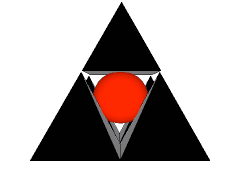








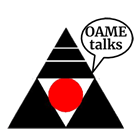
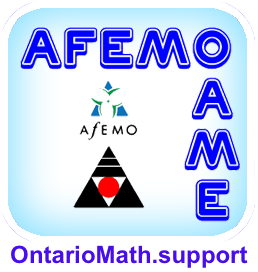
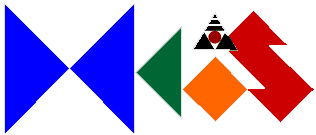



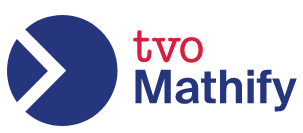

 Like us on FaceBook
Like us on FaceBook